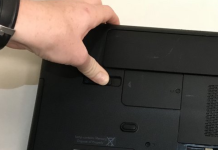Computer modules are intended to act as the core of implanted registering frameworks, giving the fundamental handling, memory, and I/O capacities expected to run a great many applications. What separates COMs from other inserted registering arrangements is their particular plan, which takes into consideration simple customization and adaptability.
Computer on-Modules are a critical part of the realm of implanted registering, giving an adaptable and secluded answer for planning complex implanted frameworks. These little, independent system on module sheets coordinate the center parts of a computer onto a solitary module, including the processor, memory, stockpiling, and I/O interfaces.
What Do Computer-on-Modules Do?
Computer-on-modules are little, flexible figuring stages that are intended to be coordinated into bigger frameworks. These modules contain the center parts of a computer, including the processor, memory, stockpiling, and correspondence interfaces, all on a solitary minimal board. COMs are regularly utilized in a great many enterprises, including modern computerization, clinical gadgets, and transportation frameworks, and that’s just the beginning.
Their little structure element, versatility, and adaptability make them an ideal decision for implanted figuring applications where space is restricted, and execution prerequisites are continually developing. It takes into account simple redesigning and customization of implanted frameworks.
Rather than overhauling a whole framework each time there is a requirement for an even more remarkable processor or extra elements, designers can basically trade out the COM module with another one that meets their necessities. This makes COMs a savvy and effective answer for installing figuring power into different applications.
Role Of Computer on-Modules in Embedded Computing
Computer-on-Modules assume a pivotal part in implanted processing by giving a normalized structure component to coordinating complex figuring capacities into more modest gadgets. A portion of the explanation is given below.
Adaptability Facilitator
Computer-on-Modules are known for their versatility capacities, making them a facilitator for simple overhauls and customization in implanted figuring frameworks. Whether it’s adding serious handling power, memory, or network choices, COMs give a helpful and effective method for increasing or down in light of explicit venture necessities.
Their particular plan takes into consideration consistent incorporation with existing equipment and programming, empowering a financially savvy and efficient answer for designers shifting focus over to future confirmation of their inserted frameworks.
Normalization Empowering Agent
Computer on-modules assume a significant part in normalizing implanted figuring frameworks. By giving a minimal, tradable module that contains the central parts of a computer framework, COMs empower makers to incorporate them into their plans without any problem.
Measured Plan Support
Particular plan support is a vital advantage of Computer on-modules in implanted registering. These modules are intended to be effortlessly coordinated and refreshed, considering an adaptable and versatile way to deal with a framework plan. With COMs, engineers can rapidly adjust to changing prerequisites and keep up with long-haul item supportability.
Customization Stage
Computer on-modules offer an adaptable stage for implanted processing arrangements. With COMs, clients can pick the ideal processor, memory, and capacity parts to meet their particular application prerequisites. This adaptability takes into consideration quicker improvement and arrangement of inserted frameworks.
Incorporation Simplifier
Computer-on-modules resemble building blocks for implanted registering frameworks. They incorporate key parts like processors, memory, and points of interaction into a smaller module that can without much of a stretch be connected to a transporter board. This improves the plan interaction, decreases advancement time, and makes it more straightforward to redesign or supplant parts depending on the situation.
Life Span Enhancer
Computer-on-Modules act as a life span enhancer in implanted processing frameworks. Since COMs embody key parts like the processor, memory, and points of interaction on a little module, they can be handily supplanted or updated without overhauling the whole framework. This measured methodology expands the life expectancy of installed frameworks.
Bottom Talk
Computer on-modules are minimal, independent registering arrangements that incorporate processors, memory, stockpiling, and other fundamental parts generally on a little module. These modules can be effortlessly incorporated into bigger implanted frameworks, giving adaptability, versatility, and customization choices.










